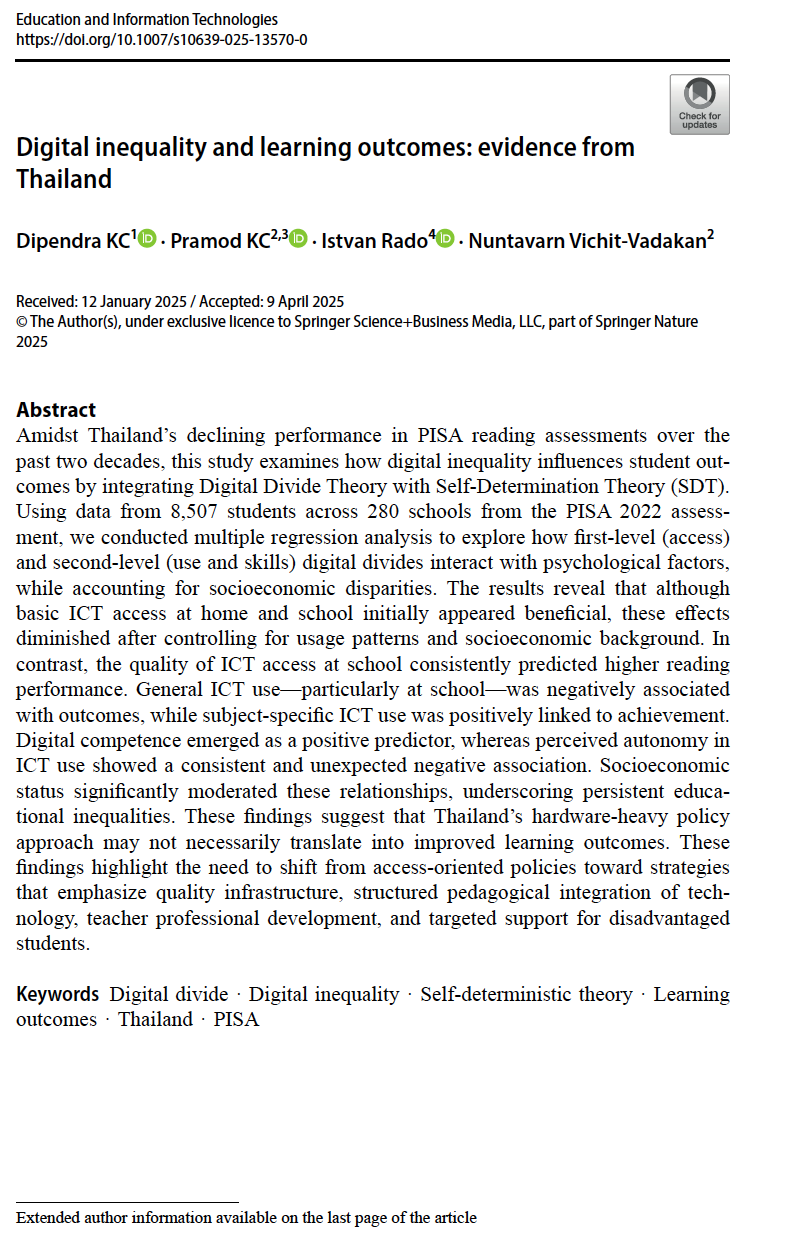This article, published in the Journal of Education and Information Technologies (EAIT), contributes to ongoing discussions at the intersection of information technology and education. The study was led as an extension of my prior work with the International Telecommunication Union (ITU) and the United Nations Educational, Scientific and Cultural Organization (UNESCO), driven by a continued interest in the role of digital inequality in shaping educational outcomes.
Focusing on Thailand’s long-term decline in PISA reading performance, the research investigates how digital inequality affects student achievement by integrating Digital Divide Theory with Self-Determination Theory (SDT). Drawing on data from 8,507 students across 280 schools participating in the 2022 PISA assessment, the study employs multiple regression analysis to explore the interaction between first-level (access) and second-level (use and skills) digital divides and psychological factors, while controlling for socioeconomic disparities.
Key findings reveal that while basic ICT access at home and school initially seemed beneficial, these advantages faded once usage patterns and socioeconomic background were considered. In contrast, the quality of ICT access at school remained a consistent predictor of better reading performance. General ICT use—especially at school—was negatively associated with outcomes, whereas subject-specific ICT use was positively linked to achievement. Digital competence was found to be a strong positive predictor, while perceived autonomy in ICT use showed an unexpected and consistent negative correlation with performance. Socioeconomic status significantly moderated these effects, highlighting deep-rooted educational inequities.
The study challenges Thailand’s hardware-centric education policies, suggesting that mere access to technology does not guarantee improved learning outcomes. It advocates for a strategic shift toward enhancing the quality of digital infrastructure, integrating technology with pedagogy, investing in teacher professional development, and providing targeted support for disadvantaged students.
